Safflower - what is this plant?
Safflower - This is an annual plant of the Astrov family, it is also called American saffron or dye thistle. The plant can be found in the wild as a weed and specially grown. It grows in America, Spain, China, Egypt, Africa, as well as in Turkmenistan, the Caucasus, in the Kharkov and Poltava regions and on the territory of the Crimea.
Content:
- Features of the structure of the plant
- Useful properties and application
- Contraindications for use
- Reproduction and planting of safflower
- Care advice
Features of the structure of the plant
Dyeing safflower - the plant got this name because it has long been used to dye fabrics and wet tapes for mummification. The plant has medicinal properties and is often used in folk medicine, as well as in cosmetology and cooking.
Safflower is a tall plant, some of its specimens in mature form reach 1.5 meters.
It has a straight but branched stem with a glossy white and dense dark green thorny leaves. They are oblong and serrated at the edges and on the upper part of the stem are not as large as in the middle or lower part of it. Leaves perform the function of photosynthesis. Safflower blooms from June to September in small (up to 3.5 cm in diameter) flowers with bright yellow or orange petals.
Useful properties and application
The value of a plant lies in the content of useful substances in its composition:
- isocartamine
- cardamidine
- luteolin glycoside
- kartamina
- chalconic glycosides
These substances give the right to consider safflower as a medicinal plant, which has long been used in folk medicine. It is beneficial and has been used successfully to treat many ailments.

The healing effect of safflower is that the plant:
- is a mild laxative, diuretic and choleretic
- has a calming effect on the nervous system
- has excellent tonic and anti-inflammatory properties
- normalizes the menstrual cycle
- lowers blood cholesterol levels
- used as an effective emetic and antibacterial agent
- stabilizes blood pressure
In traditional and folk medicine, safflower is used in the form of medicinal tea, tinctures or decoctions. They help get rid of many diseases such as heart failure, kidney disease, anemia and numbness in the limbs.
Safflower honey is also a very valuable plant product, it contains a high concentration of many useful substances, in particular calcium, chromium, zinc, iron and silver.
In the east, safflower is valuable as a substitute for saffron. The seeds and cake of plants contain protein, so they are fed to poultry, and the silage made from it - to large animals.
Safflower seeds are used to produce cosmetic oils that improve the condition of the skin and even heal it. In addition, oil is made from hulled seeds of dyeing safflower, its quality is not inferior to sunflower oil. Excellent margarine varieties are produced from it.
Industrial oil is also produced from the seeds of the plant; white paint is diluted with it so that it does not turn yellow. The plant is successfully used in soap making and in the manufacture of linoleum.Bright multi-colored safflower flowers are used as a dyeing agent in carpet business.
Contraindications for use
The safflower plant should be used for medicinal purposes in moderation and carefully, and this should be done only with the permission of the attending physician. The daily use of some medications may be incompatible with safflower, especially when it comes to combining safflower-based products with anticoagulants. The plant is contraindicated in pregnant women, children, the elderly and patients with poor blood clotting.
Reproduction and planting of safflower
Safflower is an unpretentious plant and is often found in nature as a common weed. To grow safflower for industrial purposes, its seeds are sown in early spring, and already at + 2C they germinate. A cold-resistant crop can also be planted for the winter, since it is not afraid even of frosts down to -6C, especially since winter crops improve yields. High humidity during prolonged rains will harm the plant during seed ripening, especially during the period of pollination of flowers. Safflower feels more comfortable in hot summer conditions.
The timing of planting a crop plays a big role in growing it. In arid regions, seeds are sown very early in order to achieve early germination. So the plant will have time to form its root system before the drought begins and will not need additional watering. A delay in sowing can lead to the death of seedlings, since in the absence of moisture they will not have time to form
After 10 days from the moment of sowing, the first shoots will appear, and the seeds will ripen only after three months.
70 days after the seeds germinate, the safflower will bloom and will bloom for a whole month. The central baskets will bloom first, and then those that are on the sides. The leaves located tightly to the inflorescence will remain pressed and will not allow the seeds to fall out.
Special skills or compliance with special agrotechnical requirements are not required for the cultivation of safflower (its cultivation is absolutely consistent with the rules for growing the well-known sunflower):
- It is also sown at the beginning of March, in extreme cases - in April. Sprouts appear after 10 days.
- To achieve yield, fertile soil is used.
- Sowing is done under a hoe with a depth of 5 cm.
- The spacing of the rows should be from 50 to 70 cm, and in a row - up to 40 cm.
- It is necessary to provide the plant with space for further growth, remove weeds and loosen the soil.
- In a normal climate, precipitation should be sufficient for the growth and development of the plant.
If the planting of safflower is planned on the site after the cultivation of grain crops, then it is better to peel the stubble. On soils contaminated with annual weeds, before planting safflower, it should be treated with disc cultivators 6-8 cm deep. actions strictly according to the recommended application technologies.
Care advice
Taking into account the early terms of sowing the crop, after moldboard plowing, it is advisable in the fall to develop padded ridges, furrows and carry out cultivation to a depth of 8-10 cm to level the surface.
How to care for a plant:
- Watering. Powerful root system safflower is already formed by the dry summer and its elongated roots penetrate to a depth of two meters, where they take moisture and substances necessary for growth, therefore the plant is considered moisture resistant and does not need frequent watering. The dense, fleshy structure of the leaves accumulates moisture and since the plant uses it rationally, it can even withstand drought. It is necessary to water the safflower more often during the development of buds and seeds, this will be the key to a large harvest.
- The soil.Safflower grows on any type of soil, even on not very fertile and salty ones. But to achieve good yields, it is best to grow it on black soil, loamy and sandy loam soil. With the close location of groundwater, the yield of the plant doubles even under unfavorable conditions. Before planting the seeds, the soil is plowed shallowly.
- Food. With insufficient soil fertility for growing safflower and if you want to achieve high yields, you can apply a low fertilizer rate to the plant. Sometimes metered doses are introduced under the chill. mineral fertilizers N30-45P40-60K15-45 or N45-60P30-45. The fertilizer rate is set by calculating the nutrient content of the soil. In the case of moldless technology, phosphorus and potash fertilizers are applied under the fall (before disking), these are small nomes of 20 kg per hectare. And nitrogen fertilizers are introduced into pre-sowing cultivation.
Do not be afraid to cultivate safflower, as this plant is not picky and grows even under the most unacceptable conditions. The main thing is to adhere to the rules of planting and caring for the plant, then the plant will give the maximum volumetric harvest.
More information can be found in the video:



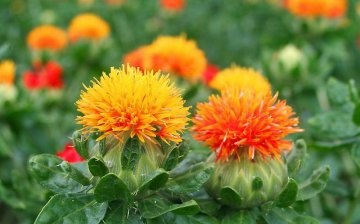

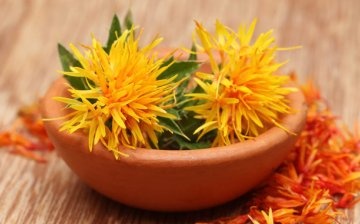
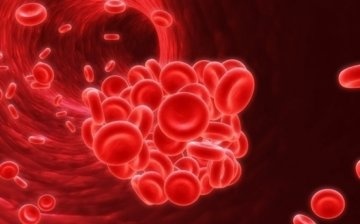
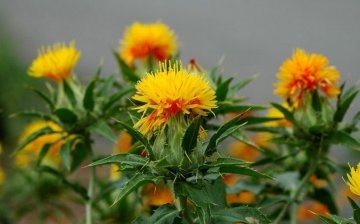
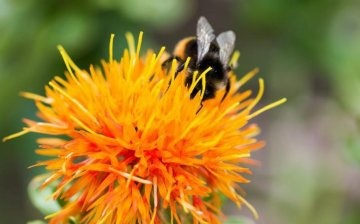






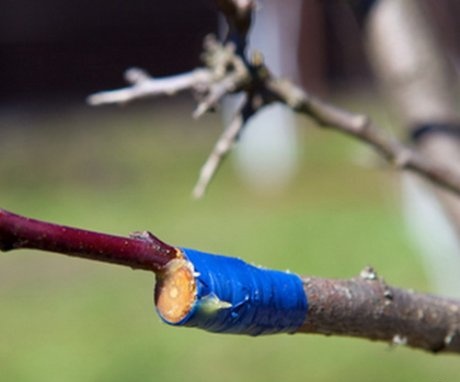
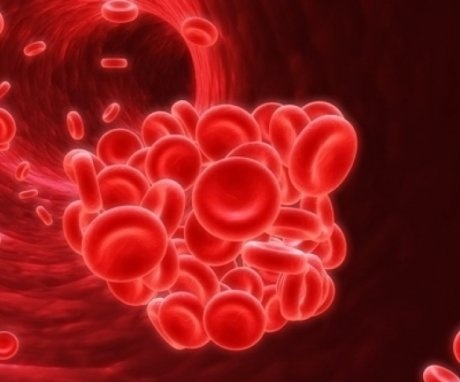
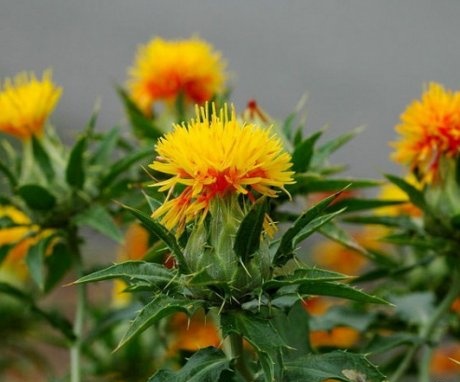
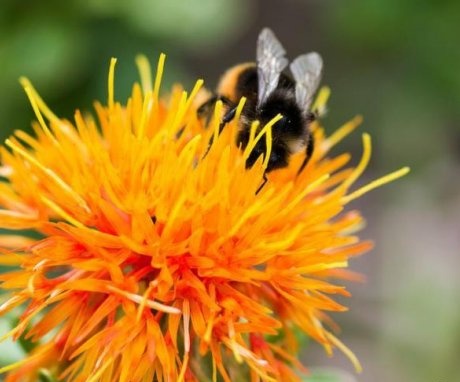
The plant is well known to me, but I could not even imagine that it is so useful and used in traditional medicine. I will definitely try to use it, especially since I do not fall into a number of contraindications.
Such a plant grows in the country in the flowerbed and with us. However, it has only one purpose for us, namely, it decorates the entrance group. Perhaps there are medicinal properties, but in our family we prefer traditional medicine.